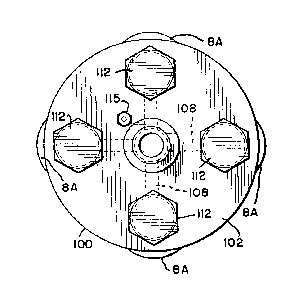Some of the information on this Web page has been provided by external sources. The Government of Canada is not responsible for the accuracy, reliability or currency of the information supplied by external sources. Users wishing to rely upon this information should consult directly with the source of the information. Content provided by external sources is not subject to official languages, privacy and accessibility requirements.
Any discrepancies in the text and image of the Claims and Abstract are due to differing posting times. Text of the Claims and Abstract are posted:
| (12) Patent: | (11) CA 1302392 |
|---|---|
| (21) Application Number: | 1302392 |
| (54) English Title: | GANG DRILL CONSTRUCTION |
| (54) French Title: | ASSEMBLAGE REGROUPANT PLUSIEURS PERFORATRICES DE ROCHES |
| Status: | Expired and beyond the Period of Reversal |
| (51) International Patent Classification (IPC): |
|
|---|---|
| (72) Inventors : |
|
| (73) Owners : |
|
| (71) Applicants : |
|
| (74) Agent: | SWABEY OGILVY RENAULT |
| (74) Associate agent: | |
| (45) Issued: | 1992-06-02 |
| (22) Filed Date: | 1987-05-29 |
| Availability of licence: | N/A |
| Dedicated to the Public: | N/A |
| (25) Language of filing: | English |
| Patent Cooperation Treaty (PCT): | No |
|---|
| (30) Application Priority Data: | ||||||
|---|---|---|---|---|---|---|
|
GANG DRILL CONSTRUCTION
ABSTRACT
Disclosed is a new method of construction for multiple or
gang down hole rock drills. A rigid mounting cylinder with
alignment and securing means for the individual drills is
provided. The cylinder further serves to attach the multiple
drills to a single drill string which supplies air to the
individual drills. The cylinder further facilitates rock chip
removal by filling all but the peripheral annulus which forms
the exit channel for exhaust air.
Note: Claims are shown in the official language in which they were submitted.
Note: Descriptions are shown in the official language in which they were submitted.

2024-08-01:As part of the Next Generation Patents (NGP) transition, the Canadian Patents Database (CPD) now contains a more detailed Event History, which replicates the Event Log of our new back-office solution.
Please note that "Inactive:" events refers to events no longer in use in our new back-office solution.
For a clearer understanding of the status of the application/patent presented on this page, the site Disclaimer , as well as the definitions for Patent , Event History , Maintenance Fee and Payment History should be consulted.
| Description | Date |
|---|---|
| Inactive: IPC from MCD | 2006-03-11 |
| Time Limit for Reversal Expired | 1998-06-02 |
| Letter Sent | 1997-06-02 |
| Grant by Issuance | 1992-06-02 |
There is no abandonment history.
Note: Records showing the ownership history in alphabetical order.
| Current Owners on Record |
|---|
| INGERSOLL-RAND COMPANY |
| Past Owners on Record |
|---|
| EWALD HEINZ KURT |